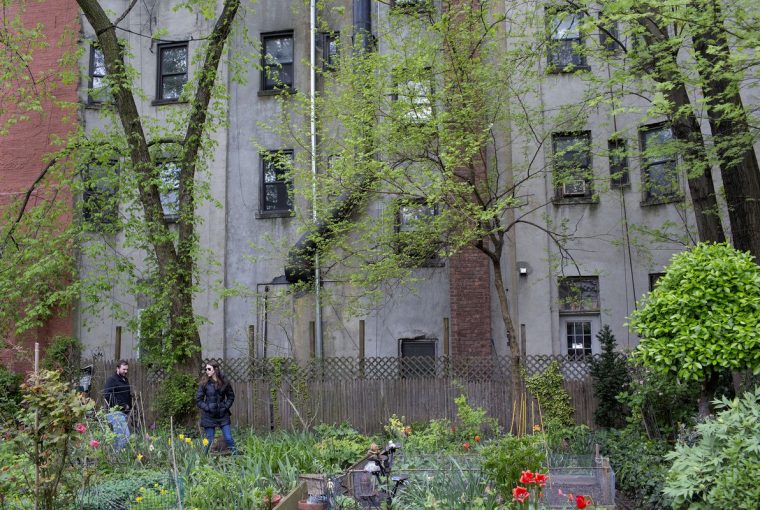Biting into a soft, juicy, ripe papaya is magical. It’s like tasting summer. Picking that papaya from a tree in a garden you share with friends instead of having to schlep to the supermarket, well, that’s the stuff of fairytales. It’s also the reality for Maui-based Emily Thiroux Threatt.
When she moved to Hawaii in 2015, Threatt quickly realized that there was no way she and her husband would be able to eat all of the papayas, passion fruit, bananas and avocados that bloomed on their property. She put a message on the social media platform Nextdoor saying that from 5 to 6 p.m. every Friday, anyone who had things from their garden they’d like to share could bring them to her house, and they’d exchange items with whoever came.
“We ended up calling it Produce Share,” says Threatt. “As time went on, I kept adding more things to my garden, and we met more people.”
While we can’t all grow papaya, community gardens are easier to start than you probably think. As we begin to get back out into the world, they can be a lovely way to create or strengthen the bond and relationships within your neighborhood.
“During these years, three husbands, including my own, died, and another member is dealing with metastatic cancer,” says Threatt, the author of Loving and Living Your Way Through Grief. “Our group is what the Hawaiian people call Ohana, or family, and we have been there to support each other through all of this loss and grief. We make sure that all of our Ohana has what we need.”
If you have empty land or any community member is willing to lend land to dedicate for a garden, you can easily set up a community garden. Threatt suggests reaching out to people in your neighborhood and seeing how you can plant complementary things, emphasizing serving each other and enjoying the process.
“Keep it simple,” she says.
Suppose you’re ready to go bigger with a community garden, though. In that case, you could look for dedicated community land by walking around your town and making a note of businesses and organizations such as schools, libraries, town halls, small businesses and churches that have unused land.
After you’ve identified some site possibilities, work up a pitch for your garden. This is the point you’ll likely want to get a few other community members interested in taking a leading role in the community garden, especially anyone knowledgeable on plants and gardening that can collaborate and decide what types of things to put into the garden. Before pitching your idea to the organization that owns your site, include details, like how big you want it to be, who will manage it, what you’ll grow, how produce will change hands and what the benefits are to the organization.
“You don’t necessarily have to have an entire plan laid out for your garden when you approach these organizations, but it would definitely help your pitch to provide as much detail as you can about your community garden plans,” says Diane Kuthy, a lifelong gardener and homesteader, with experience creating community gardens.
Don’t get discouraged if you have to approach several places.
Threatt and her neighbors have never exchanged money for their produce, but you may need some capital depending on the garden’s size.
“If you’ll need donations outside of your own contributions, then look no further than the same types of businesses you’ve approached for land. If the business cannot offer their land, give them an opportunity to become a financial sponsor of the community garden. That way, they get a bit of local publicity for their business and get to be a part of a good thing for very little money,” says Kuthy.
As you’re getting the garden set up, you also want to create a dedicated group of people responsible for tending to ongoing garden duties.
“The best gardens I’ve seen will have a large public to do lists posted with tasks for volunteers to do,” says Kuthy. “This is a great way to direct volunteer efforts into productive areas.”
So, what will you grow?



